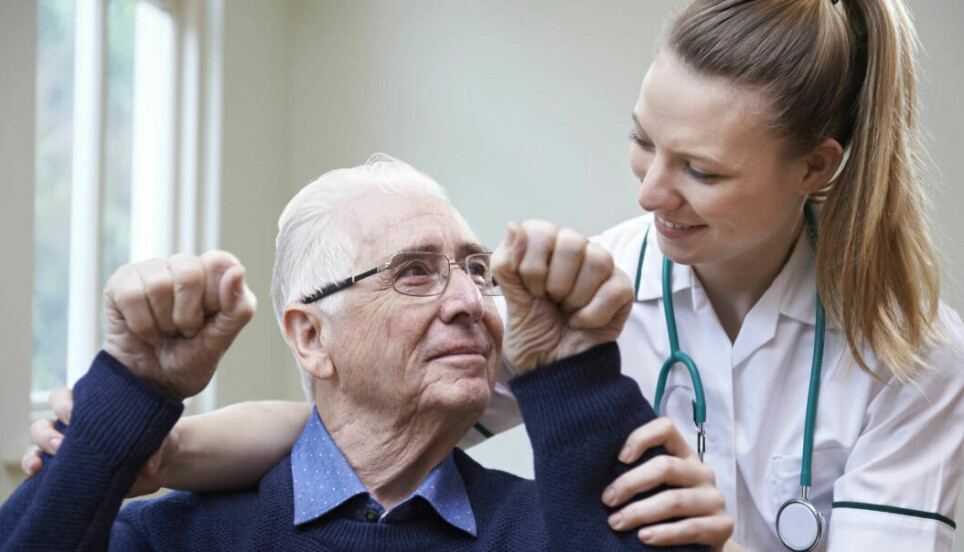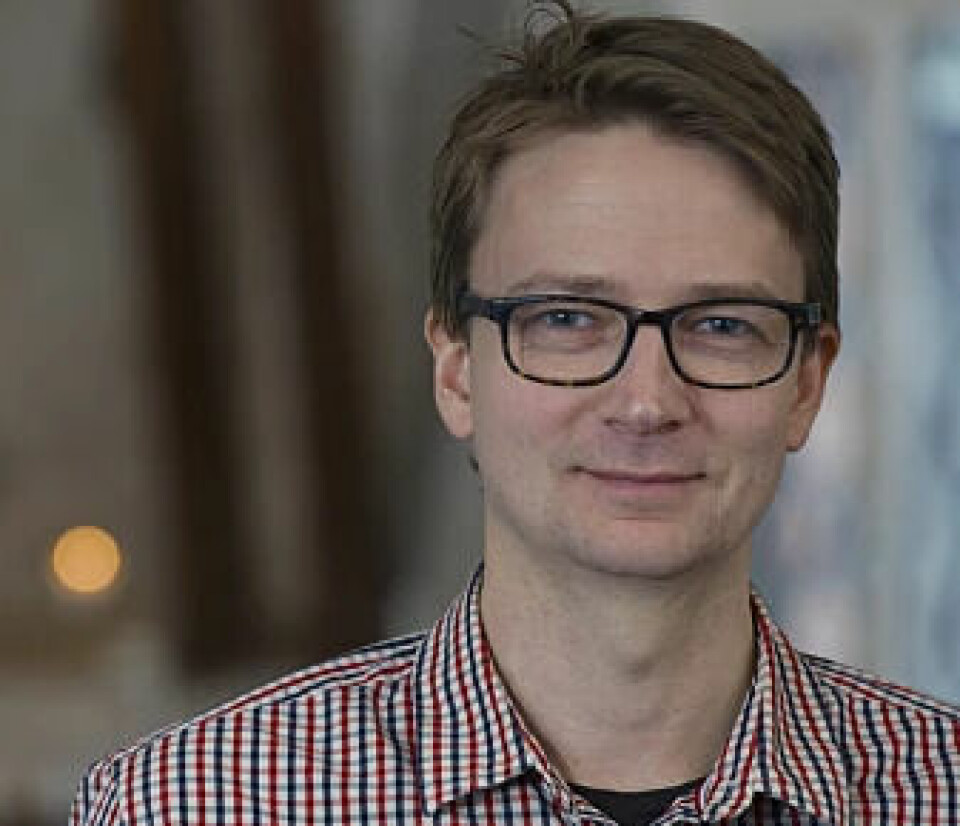
Visual impairments after a stroke can be revealed using a new method
Charting patients' visual impairments after a stroke is important to avoid misinterpretations of other functions.
Typical symptoms of a stroke are slurred speech, a drooping face and poor mobility in an arm or leg.
But visual disturbances can also be one of the first symptoms of a stroke.
Over 60 per cent of patients who have had a stroke experience problems with their vision.
Double vision or the loss of peripheral vision creates extra burdens for stroke victims in everyday life.
However, many still experience that their visual impairments are not identified and followed up by health services, according to an earlier study carried out by Torgeir Solberg Mathisen at the University of South-Eastern Norway (USN).
Lack of structured pathways
Impaired visual acuity, reduced peripheral vision, poorer ocular motility, and lack of attention to what one sees are typical visual impairments following a stroke. Many experience difficulties when reading.
However, these patients also often have difficulty expressing which visual impairments they suffer from.
“They may have difficulties registering or reporting that their vision has changed after the stroke,” Mathisen tells sciencenorway.no.
According to the Norwegian Directorate of Health’s guidelines, visual function should always be assessed after a stroke. Patients with visual impairments should be referred to an ophthalmologist, optician or visual rehabilitation.
In spite of this, the primary healthcare service has lacked routines for mapping visual function after strokes.
Lack knowledge and expertise

Patients with obvious visual impairments are noticed by healthcare workers.
“But they stated that they did not detect or follow up any visual impairments in those with more diffuse symptoms,” says Mathisen.
Many lack knowledge about visual function and its significance in stroke care pathways.
Mathisen has researched the barriers and facilitators to the implementation of a structural visual assessment following strokes.
Developed a new tool
To reduce the gap between knowledge and practice, Professor Helle Falkenberg at USN has developed a practical assessment tool – the Competence, Rehabilitation of Sight after Stroke – KROSS.
The innovation has been in collaboration with Vestre Viken Hospital Trust and several consumer organisations.
Nurse Torgeir Solberg Mathisen has now carried out further research on the topic.
In his recent doctoral thesis, he has introduced healthcare personnel to a tool that can more easily identify visual impairments and looked at the experiences of the healthcare personnel.
Tested out practical vision test
The tool is helpful for doctors, nurses, physiotherapists and others who work with the rehabilitation of stroke victims in the municipalities. It allows them to determine who needs follow-up for their vision.
The assessment tool consists of a combination of questions and practical tests.
“The patients are tested on how clear their eyesight is using an adapted vision chart. Peripheral vision is tested with a waving test (confrontation test), and ocular motility by following movement,” he says.
Visual attention is tested by having them cross off figures on a sheet, explains Mathisen.
If it is discovered that the patient has lost part of their visual function, the patient is sent for further vision testing by specialists.
Blood clots are most often the cause
In recent years, an increasing number of stroke victims have received emergency treatment to prevent serious disability after a stroke.
The two methods used for blood clots are thrombolysis and thrombectomy. A doctorate from earlier this year states that more people should receive these treatments and for a longer period of time than until now.
Motivated to increase competency
Mathisen has looked at the homecare service to test the staff's experiences with the new assessment tool.
A barrier to having it introduced in the health service is that health personnel have a lack of knowledge about visual function and lack of structured interdisciplinary collaboration.
“Yet they were very motivated to strengthen their competency,” says Mathisen.
When the health personnel learned that as many as six out of ten stroke victims have visual impairments, they were motivated to do more to uncover this in their patients.
Another key barrier is that many have experienced the introduction of new routines which do not come to fruition.
Catch symptoms in the right order
Other symptoms of stroke have been much more in focus, such as paralysis, speech difficulties, facial droopiness and cognitive impairment.
A useful experience the staff reported, was that the new assessment tool gave them the opportunity to uncover symptoms in the right order.
If cognitive impairment is suspected, it may actually be a simple visual impairment that can be corrected.
“By focusing more on visual impairments early on, staff can more easily tell symptoms apart. If a patient struggles to eat, it may be because only parts of his field of vision are intact and he therefore cannot see the food on half his plate,” explains Mathisen.
This visual impairment is called neglect, and specialists must help with rehabilitation.
Mathisen already has a master's degree in clinical health work within aging and elderly care. He hopes that the new tool can eventually be introduced into the health service in the municipalities that deal with the rehabilitation of stroke victims.
Guidelines
In the Norwegian Directorate of Health's (link in Norwegian) guidelines for the treatment and rehabilitation of stroke, it is recommended that:
- Visual function should be assessed after the stroke, and patients with vision problems should be referred to an ophthalmologist, optician, orthoptist and/or visual rehabilitation.
- Treatment with compensatory measures is suggested for stroke victims with visual field effects.
———
Translated by Alette Bjordal Gjellesvik.
Read the Norwegian version of this article on forskning.no
References:
Falkenberg et al. “Invisible” visual impairments. A qualitative study of stroke survivors` experience of vision symptoms, health services and impact of visual impairments, BMC Health Services Research, 2020. DOI: 0.1186/s12913-020-05176-8
Mathisen et al. Barriers and facilitators to the implementation of a structured visual assessment after stroke in municipal health care services, BMC Health Services Research, 2021. DOI: 0.1186/s12913-021-06467-4
Mathisen et al. ‘If we don’t assess the patient’s vision, we risk starting at the wrong end’: a qualitative evaluation of a stroke service knowledge translation project, BMC Health Services Research, 2022. DOI: 0.1186/s12913-022-07732-w
































